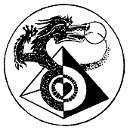
The World of Tibetan Pulsing
& Tibetan Pulsing Resources Worldwide
What is Tibetan Pulsing Yoga? (Continued)
Meditation and Awareness
The word 'meditation' is perhaps a misnomer, since its original meaning implies a mental process, and yet it was chosen to translate a concept from Hindu and Buddhist traditions originating in India which essentially did not relate to a mental process. Nowadays, however, most people have some cursory idea of what meditation is supposed to be, even if for many people it is just a form of relaxation.
A Western parallel of meditation is the word 'prayer,' and yet meditation is very different to this as well. Rather than relating to a mental (verbal or conceptual) process, meditation has more to do with a state of awareness or alertness, and hence another term which is often used in connection with meditation is 'the watcher,' referring to that part of the self which is able to simply 'watch' everything which is taking place without identifying with it. This is essential to Tibetan Pulsing Yoga, since it is through developing the 'watcher' inside that we can attain freedom from all the sufferings of life: by 'watching,' we lose our identifications not only with suffering, but with those things which cause suffering.
Whether meditation is perceived as just a form of relaxation or something more than this, though, one thing is for sure: the majority of people in the Western world are no longer in a state of mind or body where they can relax enough to practise it. Most people experience great difficulties when at first they try taking up meditation, yoga or even just relaxation, because of their fast-paced modern lifestyles.
Tibetan Pulsing Yoga offers a unique and highly effective solution to this.
By using touch, sound, colour and many other methods, we can bridge that gap and meditate without any problem - and enjoy it too.
If you sit in a 'Buddha posture' and try to meditate - to really meditate - then (let's be honest!) it is difficult to maintain it for more than a few seconds - if that - before the mind begins to wander again. Millions of people throughout history have encountered this same problem, and yet they go on struggling because they have been taught that meditation is a method of sitting still in silence.
At long last, though, this misunderstanding can now be cleared up - and indeed totally revolutionised - by using the tools offered to us by Tibetan Pulsing Yoga, and now when I am engaged in a Tibetan Pulsing session it is not that it is difficult to meditate for more than a few seconds - it becomes difficult for me to stop meditating even after up to 45 minutes have passed and it is the customary time to stop! What a difference. Never again need anyone complain that meditation is difficult - all they need to do, in this case, is change their limited idea of how meditation can be practised by taking up Tibetan Pulsing Yoga.
Previous page What is Tibetan Pulsing Yoga? Next page
1 2 3 4 5 6 7 8 9 10 11 12 13 14 15
Sister Sites Maintained as Educational Resources by the Same Authors:
Link to: FCT World - First Prepare Your System for Yoga & Meditation Using the Unique & Powerful System of Medicine called Field Control Therapy Link to: Key Toxins - Exclusive Articles, Info & Interviews about Toxicity, the World's Most Pressing Issue
Link to: See What Is There - Wide-Ranging Humanitarian Web Resource, of Which Tibetan Pulsing World is Part Link to: Deep Energy Healing - Resources on Different Therapies, the Nature of Healing and the Future of Medicine
© Copyright 2007 Simon Rees and Tibetan Pulsing World. Disclaimer: The information at this website is not intended to be a substitute for professional medical advice, diagnosis or treatment. Always seek the advice of your doctor with any questions you may have regarding a medical condition. The content of this website comprises only the observations and opinions of the authors and contributors: it does not constitute medical advice to readers.
